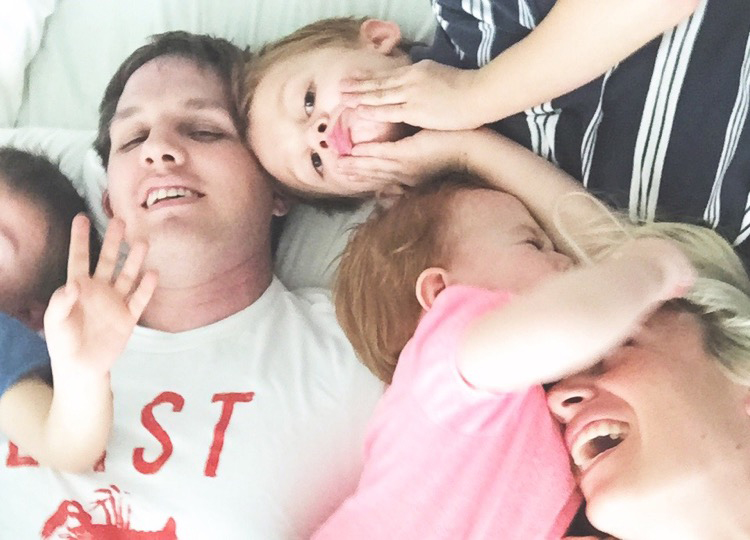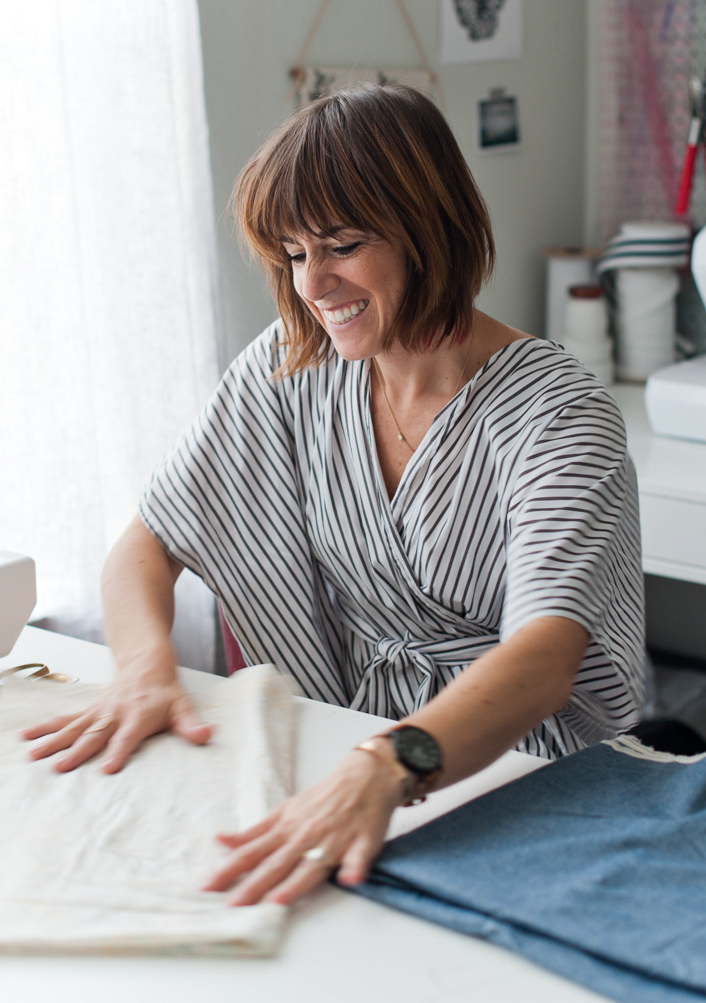Ten years ago I was living in Buenos Aires, Argentina as a missionary. In a sermon taught by a pastor of an evangelist church we were visiting, I heard and example that has come back to me time and time again.
The pastor told us to imagine we were in a group picture.
When the photo was developed (this was before the age of digital cameras), the way each of us felt about the picture would depend on how we individually had come out. For example, if I looked good, even if the rest of the people in the photo had closed eyes or weird faces, I would think the picture was great! However, if I didn’t look good, regardless of being surrounded by perfectly smiling faces, I would think the photo was bad.
Each of us would determine the value of the photo based on how we, and we alone, looked in it! The point was that our natural state is somewhat self-centered. We naturally determine how we feel about things filtered through the lens of how they relate to us, for better or worse.
Fast forward to now. Cameras are not only digital, but pull double duty as moment capture and moment sharing devices, with pictures of everything we do, eat, wear, design, buy, sell, and think put into the public eye via social media. These days, we are not physically in every picture that we see, but we still naturally determine how we feel about things filtered through the lens of how they relate to us, for better or worse.
I absolutely love social media. I’m semi-addicted to Instagram, and have developed new friendships with people I’ve met there. I also gain inspiration for my home and family as I scroll through the feed, and enjoy keeping up with my real life friends and family in such a visual environment.
The abundance of image sharing has come with some consequences, though. Much has been written about how comparison in social media can be a downer. And there has been a call for being more real, bonafide, and honest with our social media use. I agree that authenticity is important, and I try to be transparent in my feed.
I do also realize that social media in many cases is more media than social for some users. So of course the images shared will all be on-brand, styled, and crafted to absolute beauty before posting. And that is totally okay! Some of those styled images are the ones that give me new ideas for home décor, or make my mouth water to try a new recipe. And some of the styled images I post on my own feed are the most fun creatively.
There is room for both.
The danger for having a negative social media experience comes when, like the pastor taught, we think that everything we see somehow relates to or reflects on our own lives.
If that girl looks so pretty in her new spring look and I’m still wearing my pajamas, somehow that makes me feel not good enough. Or if those fun moms took their kids on a five-day Disneyland adventure and my family can’t afford to take my kids to the zoo, then I must not be living right.
Even being super conscious of these comparison and self-deprecating traps, I sometimes fall victim to feeling badly in my social media use. Read on for five tips I want to share that I use to keep the experience positive, inspiring, and useful when I might sometimes feel down.
1. Determine your WHY
You probably follow feeds for a variety of reasons. Some of friends and family you know personally, some of internet friends who seem interesting, some of tastemakers who you keep up with for ideas and inspiration, some of brands or companies who keep you in the know, some of news organizations where you keep current, and maybe even more reasons than that.
Take a minute to determine your WHY for following each of these feeds, then be aware of that purpose as you scroll through each day. If you follow a particular fashion blogger because you like getting ideas for new outfits, allow yourself to disconnect any personal reflection related to her feed.
If she looks amazing, feel excited about being able to put that look into action, rather than feel deflated that you didn’t do your hair today. Realize which of the feeds you follow are actively styled as media, and which are more honestly shared as social, and let yourself be uplifted by both. You can commiserate with a friend who has sick kiddos AND love that new room design by your favorite stylist, and both can be positive when you keep them in their place.
2. Engage vs Observe
I think we can safely say that anyone who has a public Instagram of Facebook page at this point is well aware that anyone can follow along. You might even be able to safely say that most people with a public profile will hope you follow along. So, we can put away the notion of “stalking” people on social media (except in the cases of ACTUAL stalking, which I know do happen and should be handled legally.)
Following someone who we don’t know needn’t make us feel weird or awkward. More and more social media is a valid way to connect with people and even make new friends. Sometimes though, it can be easier to feel bad about ourselves when we simply just watch all of the beautiful pictures scroll by.
I’ve found that actually engaging in social media by liking and commenting on the photos of people I both know and don’t know makes it feel like real interaction and connection and takes away that negative feeling of comparison that may come with more passive observation.
Somehow, reaching out with a “You look beautiful!” or a Heart Eyes emoji allows me to get outside of the place where someone’s beauty means my ugly, and also reminds me that the people posting those photos are also people, as worthy as I am of love, compliments, and validation.
Feeling happy about the success and beauty of others will immediately make us feel better about ourselves than being jealous about the success and beauty of others will. When you start to feel bad looking at your feed, try engaging to make the experience real, and turn the negativity around. (Also, I love this article about being aware of our own state when engaging. Definitely worth a read.)
3. Keep some Treasure
Even though social media is a forum for sharing, not every single thing we experience should be shared.
It is so tempting, I know, to share photos of every fun outing, every delicious meal, every cute child moment, or even every bad day. But sharing makes us vulnerable, and if our whole lives are online it can sometimes feel like our real lives feel empty because it’s all been put out there. Keep some treasured moments for yourself and your family.
Actively choose some things that you are going to enjoy only in real life, offline, shared only those closest to you. I still take photos of almost everything (destined for those photobooks I have yet to assemble…) but some things, good and bad, mean more kept close to home.
4. Unfollow that Feeling
Even after trying the above three tips, you may find that, for whatever reason, you still feel bad when looking at some people’s feeds. You are not married to them, so go ahead and unfollow.
It’s not a personal offense to unfollow someone. In fact, one of my very best friends tells me that sometimes she unfollows me when we haven’t talked for a while, because she doesn’t want to know what I’ve been up to so that we can have a real catch-up when we connect again!
I try to approach social media from a positive place, and really actively engage in a way that doesn’t make me feel badly or reflect what I see on myself. However, from time to time I assess what feeds make me feel good, and what feeds for whatever reason make me feel bad, and I edit accordingly.
5. Take a Break
In a lot of our lives, social media has become our most used means of communication. Some days I spend more time on Instagram talking with friends than I do through phone (what, do people still talk?!), text, or face to face.
Even last night, Dave and I were sitting next to each other on the couch when I noticed a new photo he had posted and I liked and commented on it. In Instagram. It won’t kill us, even though sometimes it feels like it might, to take a break. Turn the phone off, put it away, spend some time living without the sharing.
I have started to leave my phone connected to my computer at night, instead of on my bedside table so when I wake up I don’t immediately have the world at my fingertips. I sleep better, and wake up a little happier when I open my eyes to the sunlight through the window, my kids’ voices (usually yelling wildly as they get ready for school), and a deep breath to prepare for the day. I also actively leave my phone in a different room when I am working (sewing or preparing blog posts), cleaning my house, or really doing anything that I want to focus on 100%.
Taking time to engage in our lives, live in the moment, and be mindful of the beauty and sometimes challenges that surround us is so good for us. Even better, taking a break outside in nature can connect us to the earth, and remind us of our inherent worth among God’s many creations.
It is really up to us to take control of our own social media experience and make it positive. When used appropriately, social media can be a rich means of connection, inspiration, and an uplifting experience.
Using the above tips, I try to keep myself from determining how I feel about everything reflected through the lens of how it relates to me, for better or for worse. Because that type of self-centeredness and comparison tends to breed negativity and unhappiness.
We are all unique, wonderful, and worthy. There is so much love and support that we can share through social media, and I hope your experience can be just a little bit better through Determining your Whys, Engaging vs Observing, Keeping some Treasure, Unfollowing that Feeling, and Taking a Break. We all need a break.





